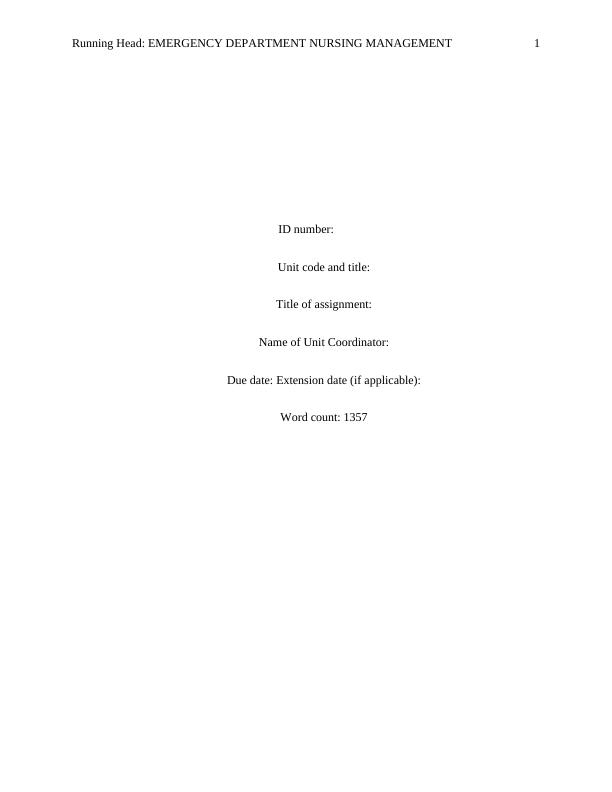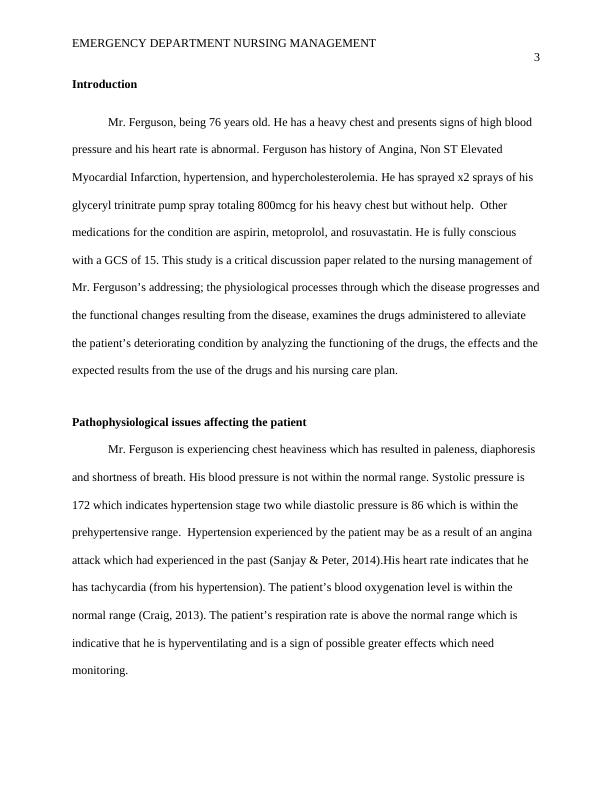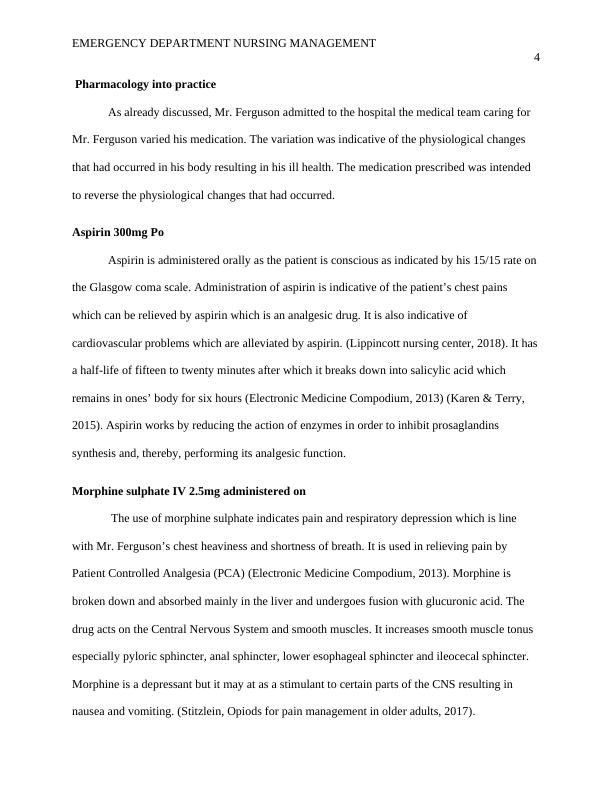Emergency Department Nursing Management
Submit a critical discussion paper related to the nursing management of Mr Ferguson's case study, addressing the patient's presenting problem, pharmacokinetics of prescribed medications, nursing management appropriate for the patient, and patient education about medication interactions and long-term effects.
13 Pages2772 Words141 Views
Added on 2023-06-04
About This Document
This study discusses the nursing management of a patient in the emergency department, examining the drugs administered and their effects, as well as nursing interventions to manage adverse effects. The article also covers pathophysiological issues affecting the patient and evaluation of management plans.
Emergency Department Nursing Management
Submit a critical discussion paper related to the nursing management of Mr Ferguson's case study, addressing the patient's presenting problem, pharmacokinetics of prescribed medications, nursing management appropriate for the patient, and patient education about medication interactions and long-term effects.
Added on 2023-06-04
ShareRelated Documents
End of preview
Want to access all the pages? Upload your documents or become a member.
GCNNK2 Nursing Knowledge 2 Case Study
|15
|1463
|65
Case Study Assessment: Pathophysiology, Pharmacokinetics, Nursing Strategies, and Clinical Considerations
|9
|2413
|375
Nursing management of a patient case study
|9
|2775
|162
Nursing Case Study Analysis
|9
|2398
|377
Pharmacology Based on Patient medication PDF
|11
|3337
|60
Complex Nursing Care Assignment
|9
|2025
|219




